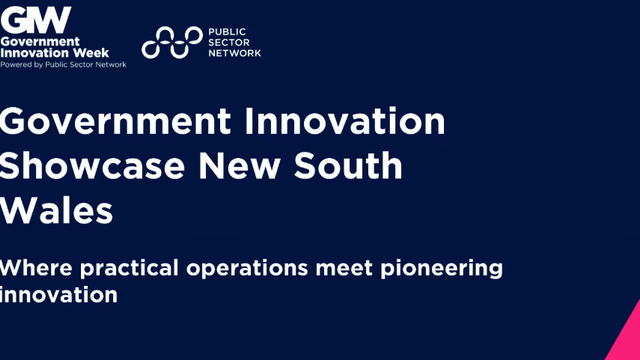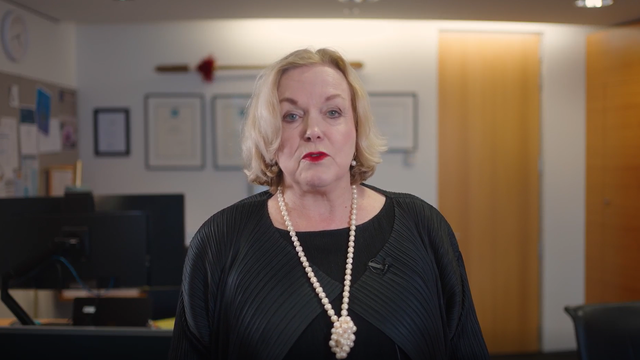

Ensuring the safety of citizens
The safety of every city is of paramount importance, and this is particularly the case when it comes to looking after the most vulnerable. Emergency services like police and ambulance do what they can, but sometimes they are stretched and don’t have the capacity to attend to non-emergency but equally important call-outs. This is when mobile crisis services come into play. One example of a successful mobile crisis service comes from the White Bird Clinic in Oregon. Tim Black, the Director of Consulting at White Bird, responsible for services across North America, says that their flagship crisis program is just one of over a dozen different services that White Bird Clinic offers, but it is particularly effective in advocating for people who are falling through the cracks.
The program known as CAHOOTS, stands for Crisis Assistance Helping Out On The Streets. Though it primarily operates in Oregon, it has inspired similar programs in Denver and San Francisco as well in Vancouver, Toronto and Ontario. In fact, the city council in Toronto is currently implementing three different pilots based on the Oregon model. The program started in Eugene, Oregon, 32 years ago, (in 1989) and it has always been about providing an innovative approach to mobile crisis intervention.
The uniqueness of the CAHOOTS model
CAHOOTS was set up to respond to crises and over the years, that definition has broadened and expanded. Much of the work is still about crisis counselling, interventions and prevention of suicides, but we have also moved beyond that. A large focus now is on resolution and mediation, often over seemingly trivial matters. Whilst a dispute over doing the dishes may not always lead to anything more than that, it could also lead to somebody getting kicked out of home, so we can help with that. Equally, discussing truancy issues with the family of a teenager could prevent that young person from running away. In many ways, CAHOOTS teams have become the designated first port of call when it comes to welfare checks in our community. One of the reasons why CAHOOTS has become so successful and necessary when it comes to conflict and dispute resolution is because of the way they operate.
“We don’t carry weapons, pepper spray or a Taser, and we don’t wear vests. Instead, our teams are all trained around verbal de-escalation, and this has become one of the real hallmarks of our service. It’s really what has kept us safe in the field.” - Tim Black, Director of Consulting, White Bird Clinic (USA)
The other hallmark and unique feature of the model is that all CAHOOTS teams always operate in pairs, with an EMT and a crisis worker. This is partly to ensure the safety of our responders who are unarmed, but also in order to respond to the whole person in crisis because often there is no way to separate physical and behavioral health. Both the crisis worker and obviously the EMT have to undertake appropriate training, but more important than the training is lived experience, either in mental health, recovery, housing or poverty. Then, regardless of their education or background, all responders go through our full training process, which includes 30 hours in the classroom, but more importantly, 500 hours of field training under supervision. This training is not necessarily about preparing responders for every possible situation, but is more about giving them the skills and ability to think on their feet, and to respond quickly and appropriately. This kind of thoughtful training means there has never been a serious injury in the field in 32 years, and it means that we’re not there to enforce care on somebody. We’re really trying to meet people where they’re at, and to find a way that we can work together to get through their crisis.
Funding and operations
CAHOOTS was set up in Eugene, Oregon, which has a population close to 180,000 and now also operates in Springfield, Oregon, which has a population of around 60 to 70,000. Neither town is huge – which might be beneficial in terms of how the model operates – but across the two jurisdictions it costs about US$2.2 million annually to run the program. In Eugene, our services are funded entirely by the City, taken from the total police budget allocation. Springfield is smaller with fewer resources so we rely on a combination of City funding and a grant from the County Health and Human Services for our mobile crisis services. Funding from the County means that the services can go beyond the city limits, which also means we are serving in more rural areas as well. However, despite all these funding provisions, we still have to fundraise almost half a million dollars a year to cover the costs of training and overtime. These extra funds also allows them to pay more competitive wages to make this kind of work more of a career choice than a temporary job.
The goal is to raise US$1.8 million. This will not only assist with wages but will also ensure that we can do a better job of recruitment and retention. On top of that, the current funding model is not entirely sustainable, so alternatives are being sought. One of these alternative streams is through community safety payroll tax. After all, it is estimated that the program creates savings in our two communities of $17 million a year, so for us to ask for just a 10% match on that would make a huge difference for us.
This $17 million in savings is derived from the $2.2 million that the police allocates and saves themselves in officer labor, as we well as ER diversion. With an EMT as part of every pair, we’re able to expand on our potential cost savings and address a lot of issues that would otherwise not be within the realm of a mobile crisis response program. Between that and the reduction in the number of ambulances required because of the CAHOOTS program, it is estimated that our communities are saving $14.8 million a year. Part of this is also because of the way CAHOOTS is accessed. There is no separate phone number for the service. Instead, we tell people to call the non-emergency public safety line. Some do call 911 and that will divert them, but it is not ideal. The call-takers know whether or not to dispatch a CAHOOTS van to an incident, so it is a good catch-all. Like in Canada, the US will soon have 988 as the suicide prevention and crisis support line, so that will provide another entry point.
In 2019 (the last year of available figures), there were 105,000 calls to the public safety line in Eugene. CAHOOTS teams responded to well over 20,000 of these. 15,000 were handled without firefighters, paramedics or other patrols alongside us, and 13,000 would have required traditional emergency responses in lieu of CAHOOTS. Only about 300 of the call-outs required the CAHOOTS teams to call for police or other services to assist them. Many of calls that CAHOOTS responded to related to drunkenness or aggression, though increasingly, CAHOOTS is also there to assist with grief and loss through death notifications, rather than having police officers facilitate those. CAHOOTS responders also perform first aid and non-emergency medical care, and address issues that don’t fit into any other category, specifically related to wellbeing.
CAHOOTS in many ways is a unique program that amplifies the voices of marginalized communities and opens the avenues of communication. In the communities of Eugene and Springfield, if you’re in crisis, especially after hours, ask for CAHOOTS. Though this is specific to Oregon, it is replicable in other communities and illustrates that a mobile crisis response service has a role to play outside of just being the first response.
Featured speaker:
Tim Black, Director of Consulting, White Bird Clinic (USA)
































